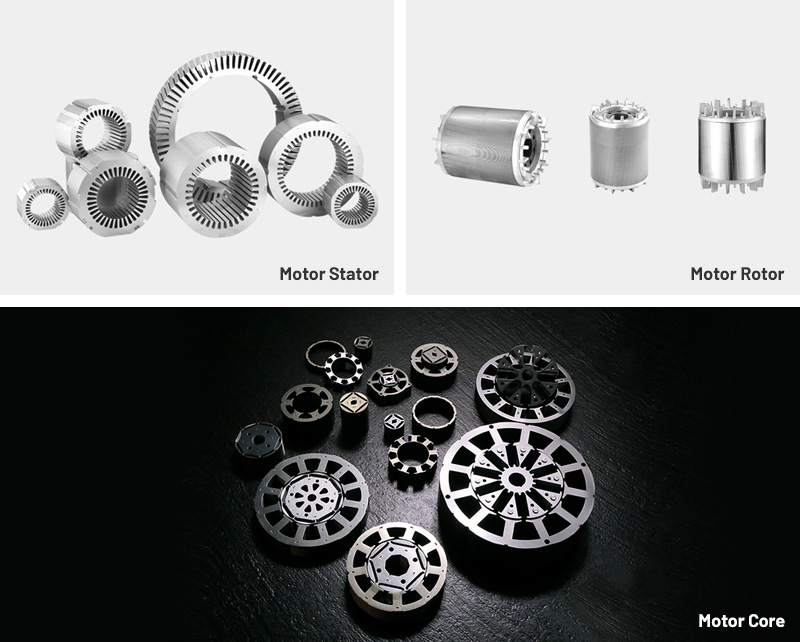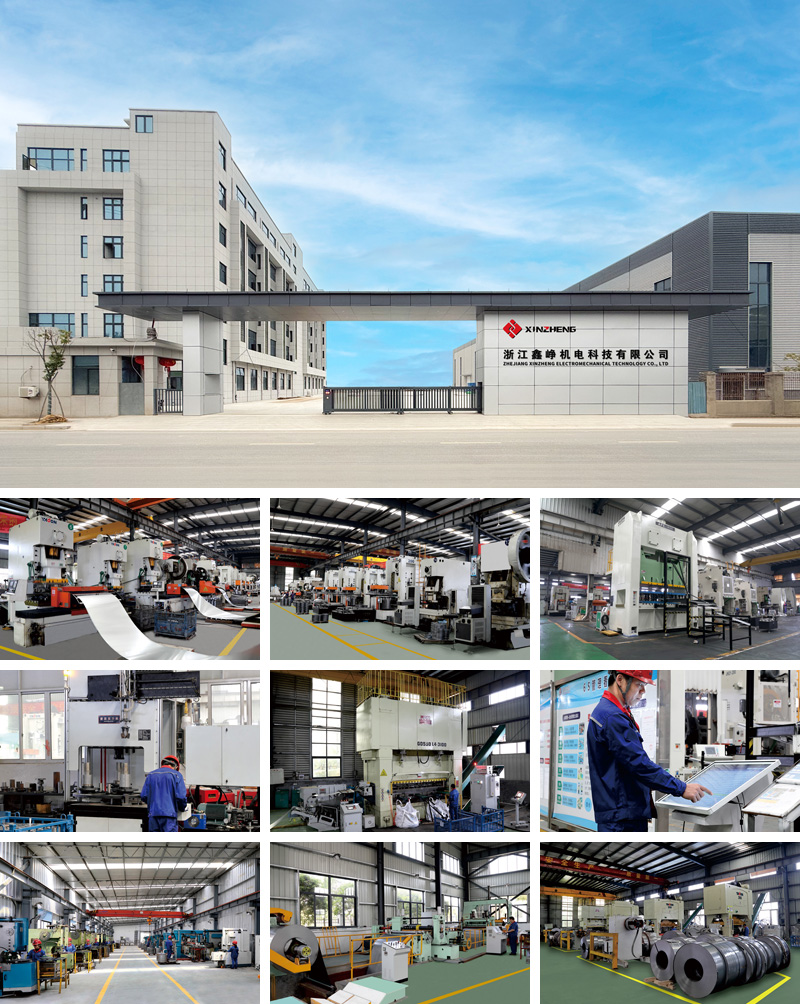Electric motors are integral components in industrial automation, electric vehicles, renewable energy systems, and specialized machinery. As applications become increasingly sophisticated, standard motor lamination sizes often fail to meet the unique design and performance requirements of modern motors. Custom-sized motor laminations address this gap by providing tailored solutions that optimize electromagnetic performance, mechanical stability, and thermal efficiency for specific motor designs.
The demand for custom laminations is driven by several factors. The rapid adoption of electric vehicles, industrial automation, robotics, and energy-efficient machinery has created a need for motors with higher efficiency, compact dimensions, and precise torque characteristics. In these applications, standard laminations may result in suboptimal energy consumption, excessive heat generation, and mechanical stress. Custom laminations allow manufacturers to design motors with exact specifications, improving reliability, reducing maintenance costs, and extending operational lifespan.
Motor laminations are thin sheets of electrical steel stacked to form the stator and rotor cores. Their main purpose is to reduce energy losses and support mechanical integrity. Custom-sized motor laminations are specifically designed for applications where standard dimensions cannot achieve the desired performance. Key technical considerations include:
Magnetic Efficiency: Laminations conduct magnetic flux efficiently, minimizing hysteresis and eddy current losses. Proper thickness and precise stacking enhance magnetic properties.
Mechanical Strength: Laminations must withstand centrifugal forces, vibration, and thermal expansion without deformation.
Thermal Stability: Custom laminations maintain their insulating and magnetic properties under continuous or high-speed operation.
Designing custom laminations involves balancing thickness, material selection, and insulation quality to achieve optimal electromagnetic performance while ensuring mechanical durability.
Custom-sized motor laminations are typically manufactured from high-grade cold-rolled electrical steel. Key material attributes include:
High Magnetic Permeability: Facilitates efficient magnetic flux conduction and reduces core losses.
Electrical Resistivity: Limits interlaminar currents to minimize eddy current losses.
Mechanical Durability: Ensures stability under continuous operation, vibration, and thermal cycles.
Insulating coatings are applied to each lamination to prevent short circuits between layers and to maintain thermal and chemical stability. The ability to tailor dimensions allows engineers to optimize stack height, slot geometry, and lamination shape to meet specific torque, efficiency, and space requirements.
Precision Die Design: Custom dies are engineered to create laminations with intricate geometries while maintaining tight dimensional tolerances.
Stamping: Progressive stamping presses produce laminations from steel strips, ensuring uniform thickness and minimal burr formation.
Annealing: Post-stamping heat treatment relieves mechanical stress, improves magnetic properties, and enhances dimensional stability.
Coating Application: Insulating layers are applied to prevent interlaminar currents and resist oxidation and wear.
Stacking and Assembly: Laminations are stacked to form stator or rotor cores, using bonding, welding, or mechanical interlocking to achieve high-density packing.
This combination of material selection, precision stamping, and post-processing ensures laminations that meet exact motor design requirements while maintaining reliability and efficiency.
Several critical factors influence the effectiveness of custom-sized motor laminations:
Material Consistency: Variations in silicon content or impurities can reduce magnetic performance and mechanical strength.
Dimensional Precision: Small deviations in lamination thickness or slot geometry can lead to increased vibration, noise, and energy losses.
Insulation Integrity: Poor coating adhesion or uneven thickness can result in interlaminar currents and localized overheating.
Stacking Accuracy: Misalignment affects mechanical stability, motor balance, and magnetic efficiency.
Thermal Management: Laminations must maintain structural and magnetic properties under fluctuating thermal conditions.
Strict quality control, material certification, and precision manufacturing are essential to ensure consistent lamination performance.
Selecting reliable suppliers is critical for manufacturers producing custom-sized motor laminations:
Material Certification: Suppliers must provide documentation detailing steel grade, magnetic properties, and mechanical characteristics.
Manufacturing Expertise: Experience with custom stamping, coating application, and high-density stacking is essential.
Quality Assurance: Suppliers should implement rigorous inspection protocols, including dimensional verification, coating evaluation, and magnetic performance testing.
Post-Processing Capabilities: Some suppliers offer annealing, coating, or partial assembly services, reducing production complexity.
Supply Reliability: Consistent lead times, material availability, and logistics are crucial for uninterrupted manufacturing operations.
Partnering with reputable suppliers reduces risk and ensures high-quality laminations suitable for demanding applications.
Even with advanced manufacturing techniques, several challenges persist in producing custom-sized laminations:
High Tooling Costs: Custom dies are expensive and require precise maintenance.
Material Waste: Complex geometries can generate significant scrap during stamping.
Coating Defects: Inconsistent insulation thickness or adhesion can impair performance.
Mechanical Stress: High-speed operation and continuous duty cycles place stress on laminations.
Thermal Challenges: Maintaining magnetic and insulating properties under varying thermal loads requires careful material and process control.
Addressing these challenges demands meticulous engineering, robust quality control, and strategic supplier collaboration.
Custom-sized motor laminations are essential in sectors requiring precise motor design and high performance:
Industrial Automation: Motors in conveyors, pumps, and CNC machines benefit from tailored laminations that optimize torque and efficiency.
Electric Vehicles: Traction and auxiliary motors require laminations that support high efficiency, thermal stability, and compact design.
Renewable Energy: Generators in wind turbines and hydroelectric systems rely on custom laminations for high flux conduction and mechanical durability.
Robotics: Precision laminations enable smooth, accurate motor operation in robotic arms, actuators, and assembly systems.
Specialized Machinery: Motors in medical equipment, aerospace systems, and laboratory instruments require custom laminations to meet unique performance criteria.
By allowing precise adjustment of lamination dimensions and geometry, these solutions enhance motor efficiency, reduce maintenance, and improve operational reliability.
The custom-sized lamination industry continues to evolve in response to technological advancements and market demands:
Advanced Materials: Low-loss electrical steels with higher permeability improve energy efficiency.
Thinner Laminations: Reduced lamination thickness allows more compact cores with minimized energy losses.
Automated Manufacturing: Robotics in stamping, coating, and stacking improve precision and reduce defects.
Hybrid Manufacturing Techniques: Laser cutting, etching, and additive processes complement traditional stamping for complex geometries.
Sustainability Focus: Energy-efficient laminations contribute to lower operational losses and reduced environmental impact.
These trends indicate that custom-sized laminations will remain essential for next-generation motors, supporting energy-efficient, compact, and high-performance designs.
Q: What distinguishes custom-sized laminations from standard laminations?
A: Custom laminations are tailored to precise dimensions and geometries to meet specific motor performance and design requirements.
Q: Which materials are typically used?
A: High-grade cold-rolled electrical steel with controlled silicon content, coated with insulating layers to prevent interlaminar currents.
Q: Are they suitable for electric vehicles?
A: Yes, they ensure efficient torque, thermal stability, and long-term reliability in traction and auxiliary motors.
Q: What are the main production challenges?
A: Dimensional accuracy, consistent insulation coatings, mechanical stability, and thermal performance under continuous or high-speed operation.
Custom-sized motor laminations provide critical solutions for applications where standard laminations cannot achieve desired performance. By combining high-grade electrical steel, precision manufacturing, and advanced insulation coatings, these laminations optimize electromagnetic efficiency, mechanical stability, and thermal reliability.
Industries such as electric vehicles, industrial automation, robotics, renewable energy, and specialized machinery benefit from laminations designed for specific motor requirements, resulting in improved efficiency, reduced maintenance, and extended operational lifespan.
Advancements in materials, manufacturing technologies, and quality assurance are driving the next generation of custom-sized laminations, ensuring motors meet stringent global standards for performance, efficiency, and sustainability. Manufacturers that prioritize material quality, engineering precision, and reliable supplier partnerships can produce motors that excel in performance, durability, and operational consistency.
Product Category

Comprehensive Strength


Copyright © Zhejiang Xinzheng Electromechanical Technology Co., Ltd. All Rights Reserved.
This website uses cookies to ensure you get the best experience on our website.